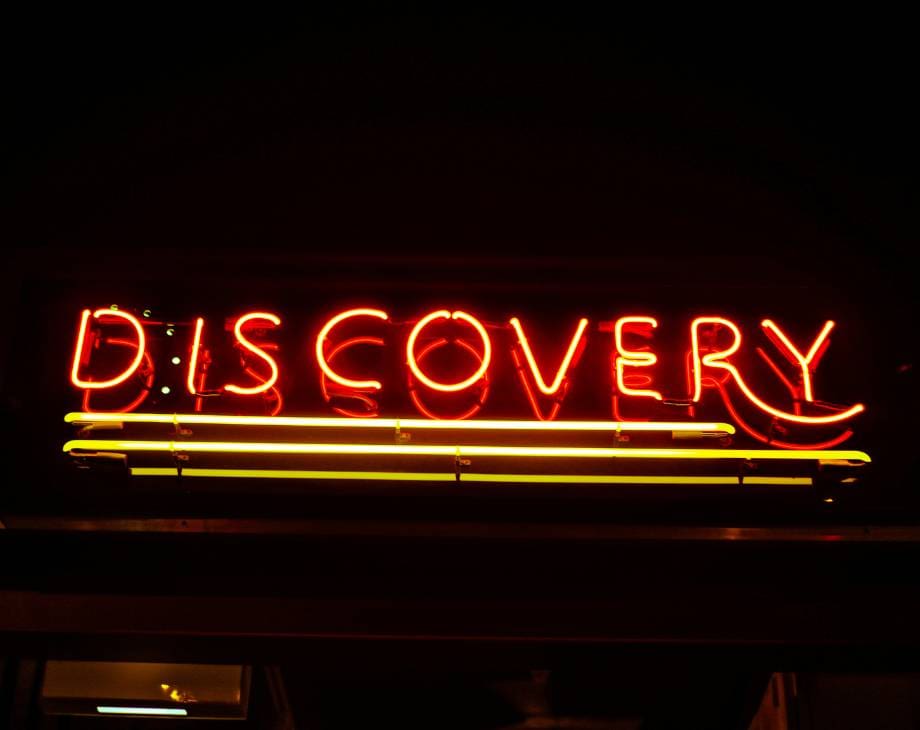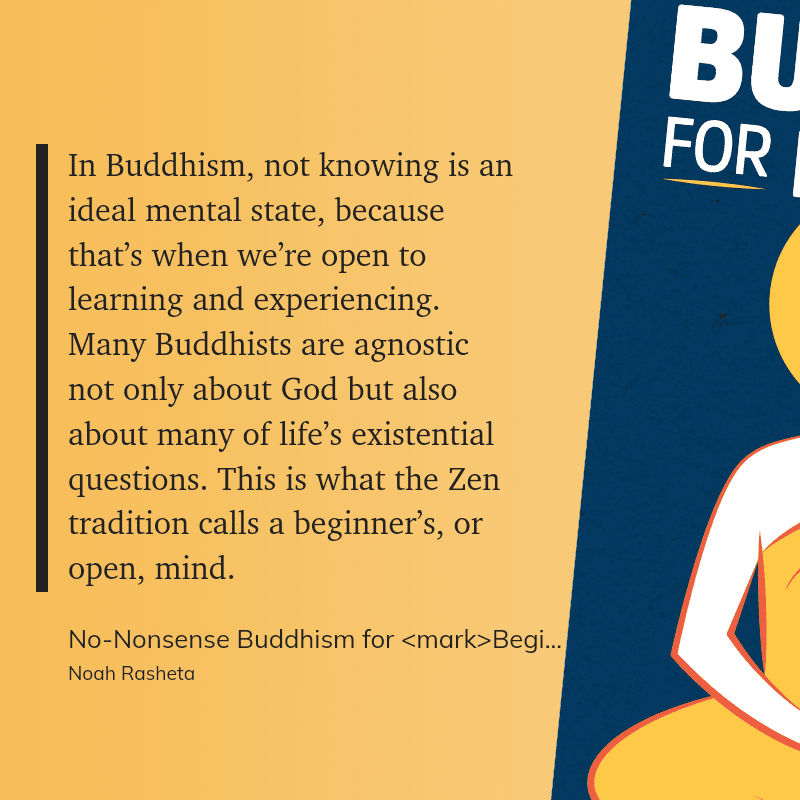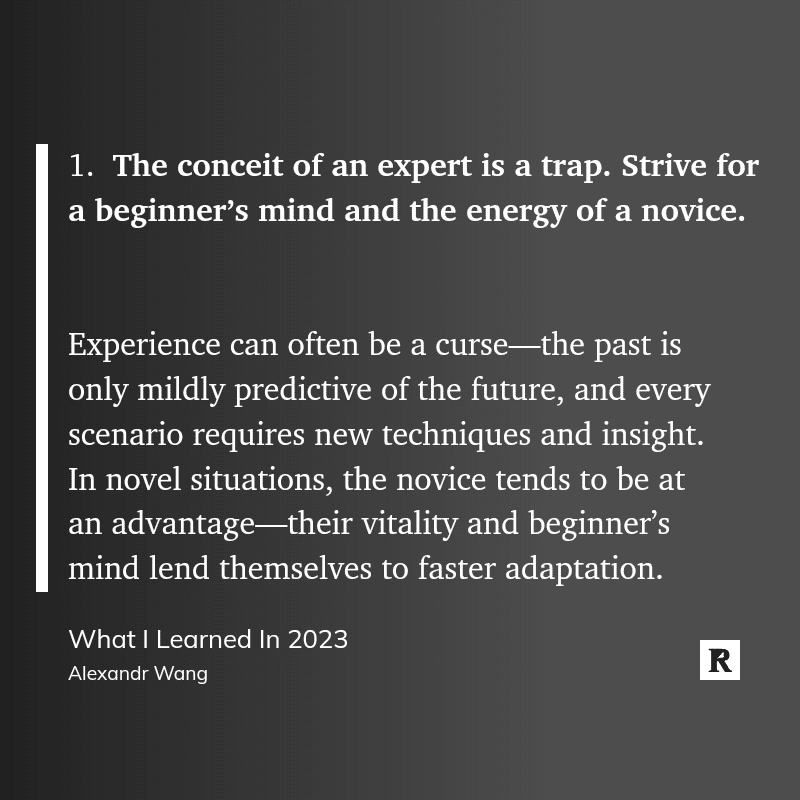Basics of executing discovery in product management
Get high returns on time invested from discovery in Product Management.

Discovery in Product Management is a big topic.
I am only covering a small sliver based my reflections and personal experiences. I’ll undoubtedly get things wrong for some contexts; use your judgement to determine what suits and tweak to fit your needs.
So let’s get started.
Learning never stops
Discovery is all about learning information that helps you make timely, high-impact decisions.
The learning must never stop. Don’t wait for big bang deep dives to give you all the answers. Don’t wait for things to be perfect before starting.
A beginner mindset is critical for continuous learning. This is also known as ‘not knowing’ in Buddhism. If you assume you do not know, you will naturally be more open to learning.

Another perspective on this is the curse of the expert, which stops you from learning new things. The rest of the blog from the quote below is worth reading; it’s very short (link at the end of this post).

Be ready to learn from everything and everyone
If you have a beginner mindset, you will be open to learning from everything and everyone.
To take a sports analogy, Michael Jordan’s hidden superpower was he was always ready to learn from his coaches.

We must believe that learning never stops, have a beginner mindset, assume a ‘not knowing’ state, and always be open to learning from everything and everyone.
Here are three examples from my work experience.
1. Learning from your salespeople
I bumped into a salesperson at Storypark in the kitchen. I asked them what new things they’ve learned about their customers, what competitors they are hearing about, what’s stopping deals from progressing, and why.
Over time, my curiosity and questions led to deeper rapport & trust. And they invited me to join their sales and account check-in calls. This created a win/win situation as I could provide product info & future directions and get insights directly from clients.
I did this at Trade Me Jobs and ImpactLab as well.
2. Tap into internal knowledge
Hunt down everything available internally. Ask for key documents like strategy documents, sales materials, past customer presentations, financial models, competitive analysis, etc. Execute this data gathering rigorously & thoroughly.
I’ve always been surprised to find new info, even in organisations where I’ve worked for years. I did this at Trade Me Jobs, Storypark, ImpactLab, Xero and MetService. Don’t assume discovery in Product Management is only about talking to customers or looking outwards.
3. Listen with childlike curiosity & use silence effectively
When talking to customers, be fully focused on them. If it helps, pretend you don’t have existing products or features. This is like being a novice or assuming a not-knowing state. Just focus on deeply understanding their worldview, their challenges, hopes and fears. Listen with childlike curiosity and gently dig to get to deeper root causes. This is especially true when learning customer needs and/or desirability. See the resources section for great articles and books on interviewing people.
Here is a quote from Walter Isaacson on listening and effective use of silence. While it’s specific to journalists, it applies more generally to interviewing people for research & discovery.

Be ready to learn, be receptive and pay attention. You will learn something interesting and valuable in almost every interaction. No matter how trivial you may have considered the situation previously.
Remember you are doing discovery to make high-impact, evidence-based decisions to build products customers love and that works for the business.
Lean, quick and iterative research
I almost always advocate for starting with lean learning opportunities. It’s usually better to start learning faster, do it more frequently, and tweak things as new information comes to light.
For example, start with internal interviews, then ask for friendly clients or users, and then ask for more clients. Giving you insights & time to tweak your approach as you learn.
Start lean and iterate on your discovery in Product Management approach as well. Start with easy approaches, then get complicated. Start small, then go bigger. Faster learning velocity is more valuable in generating timely insights and avoiding dead ends earlier.
For example, for an early-stage product idea, we (me, tech & design leads) did mockups using marker pens on A4 sheets of paper and visited prospective customers within hours of starting the discovery discussion. We let them scribble on the mocks, and we doodled on it during our chats. A few days later, we did rough design mocks, followed by a working prototype in the following weeks.
It is not rocket science and is likely covered elsewhere on the interwebs. But its surprising how often simple and lean approaches are overlooked. This is especially true in larger organisations or if you’ve been in the org for a long time or have entrenched ways of working.
Perfect is the enemy of good.
Don’t get hung up about perfect designs, or perfect questions or perfect anything. Just make sure you are asking open-ended non-leading questions and focused on understanding customer problems over selling your solutions. See resources again for more information.
Your goal should be learning velocity that is contextually relevant. E.g., compliance requirements may mean it takes you longer to get to customers vs B2C, where you can get in front of panels via websites like usertesting.com within hours. Use your judgment to determine what a great velocity looks like in your context.
Quality of insights matters too, and again, it’s contextual. If you are early stage or working on medium-risk research, you could be less rigorous and vice versa.
Lenny’s podcast with Gustaf covers Speed vs Quality, amongst other things. While the context is about startups and founders, I think it applies more generally to PMs and discovery. This interview is definitely worth watching/listening to.

Link your research to the four risks
The four risks from SVPG are desirability, viability, feasibility, and usability.
You’ll need to use discovery approaches that are relevant to the risks you’re trying to learn about. E.g., no point wasting time doing mockups for usability risks if you don’t know that customers have a burning need (desirability risk). Check out the NN Group article on which method to use when.
Always, always, always prioritise the highest risks first. And you guessed it, implement lean, quick learning cycles and execute iteratively. There is a good section about prioritising risks & assumptions in the Testing Business Ideas book by Strategyzer.
Summing up
- Learning never stops.
- Be open to learning from everyone and everything.
- Implement lean, fast learning cycles and execute iteratively.
- Connect your discovery to the four risks and always, always, always focus on the highest risks first.
Links and additional resources
Here are some of the things I’ve found valuable.
- Become good friends with your UX people. Buy them coffee/tea/cakes whatever it takes. Ask them questions about ux and ask them how to improve your research skills etc. They are your friends 😉.
- Books
- The Mom Test – short sweet book on asking great question.
- Interviewing Users – Deeper & more thorough dive for interviewing.
- Testing Business ideas – learn how to test things and when.
- Nonviolent communication – a great book on becoming a better non judgmental listener.
- People
- Other stuff
Here is a webinar by John Bowker, my fellow facilitator for the Product Management Fundamentals course, on better discovery practices in Product Management:
1 Alex’s blog post. Alex is CEO of Scale AI, a power house that enables training data for AI/ML.
2 Lenny’s interview with Gustaf. Highly recommend the YouTube version so you can see the body language but podcast is great too.
3 SVPG on Four risks, and Product risk taxonomies.
4 NN Group article on UX methods. More generally their posts on discovery are excellent!
5 Testing Business ideas – learn how to test things and when, their preferred approach for new product development. You can download the first 88 pages for free!
About me
Hi, I am Suhel.
I am writing to journal and jot down things I’ve learned and noticed in my journey so far. My posts aren’t intended to be shiny, polished pieces of writing; consider them work in progress. They may be interesting to you; if so, enjoy them and feel free to share if you find them valuable. Please let me know if you’d like to give me feedback on how I can improve my writing.